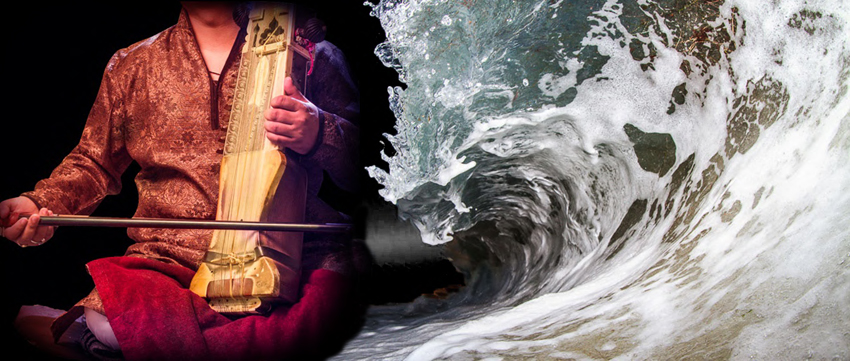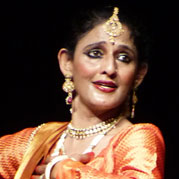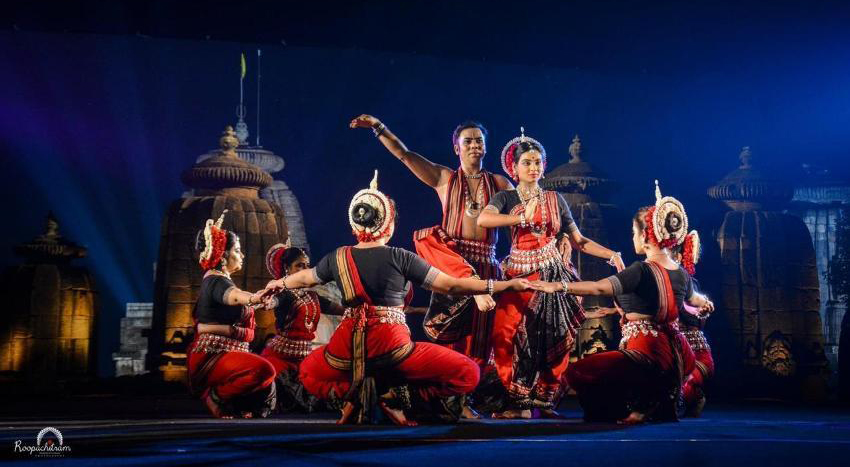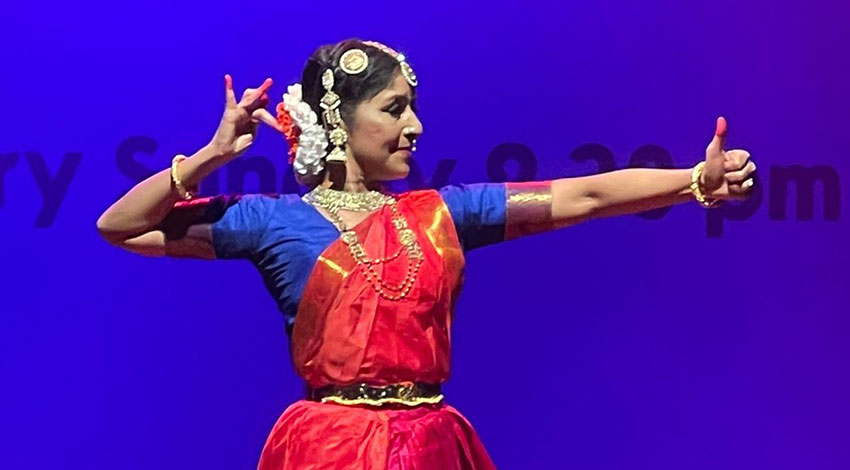The unprecedented occurrence of the Corona Lockdown provides a unique opportunity for dancers and musicians to meditate, revise and think deeply. The Manthan or churning in this period inevitably brought the image of the ‘Wave’ in mind. As a Kathak dancer here are some thoughts.
The metaphor of the Wave – Lehra
The wave called Leher in Hindi is a potent metaphor. It represents an endless continuity of cyclic energy. The Indian Cultural matrix takes this symbol and represents its inherent philosophical ethos in weaving, music, dance and meditative practices. The musical melody that provides the basic rhythmic cycle for the North Indian Classical dance – Kathak and North Indian Music is called Lehra or Wave.
The Concept of the Wave
The liquid and audio phenomenon combines the concept of two of the five elements – Air and Water. Elusive and impossible to contain the wave is a symbol of ‘movement’, potential and power.
In Buddhism, the wave represents the Mahamudra – or the great position of inherent energy. It is the union of compassion and wisdom- the ultimate realization of one’s true nature.
Lehra- Wave in Kathak Dance Kathak
Kathak, Classical Dance from North India is structured in frames of rhythmic cycles that resound in the background as basic beats woven in a melody. The chosen rhythmic cycle called Tala.
A Kathak dancer always begins her/ his performance by informing the audience the Tala intended to perform. In the Kathak dance, the rhythm (Tala) is provided by accompanying instruments in the form of percussion and musical instrument. The repetitive wave – Lehra as a lilting musical phrase is an audio aerial canvas on which the Kathak dancer, creates and enacts her/his art. The melody of the Lehra comprises of musical notes set in a selected Raga. While the percussionist matches the performed content of the dancer, the Lehra does not change. It is monochrome and like an anchor is responsible for providing the structure of the tala for the dancer and percussionist. Played repeatedly all through the performance the tempo of the melody (Lehra) is moderated by the requirement of the performer.
[adrotate group=”9″]
The Cycle:
The wave is a ‘Cyclical’ occurrence. Just as the ocean waves come, go and interact with the shore, the repetitive melody of the Lehra becomes a mantra of immersion for the Kathak dancer. The submersion of the dancer in the Lehra sets the stage for two processes. The first is a preparation of a creative flight in the Tala, the second a meditative journey. The Lehra through its cyclical sound gradually works to connect the artist to the internal clock inside the mind and body. Like in Yoga, the breath (Prana) serves to connect the body, mind, and spirit. The cyclic phenomenon of the Lehra works like a string to weave the unity of being of the dancer with the dance.
The Sum
The most important marker in the structure of the Lehra or the wave is the first beat of the tala (rhythmic cycle). The first beat is called the sum. It represents the shore of the ocean. The cycle repeats itself, again and again, hitting that shore. The journey of waves or Leher – begins and ends on the ‘sum’. The Sum is thus the central focal point of the performance. Each composition in the Nritt (technical repertoire) is intended to that core – the first beat – the shore. Every composition has to end on that shore.
Thoughts of a Dancer – Widening the Idea of Lehra – Bandhej
The symbol of the Wave is assimilated in Indian textiles among other crafts. Called the art of Bandhni or Bandhej it is the tie and dye technique in fabrics. The Bandhej craft is 5000-year-old. The highly skilled technique involves dyeing a fabric that is tied tightly with a thread at several points producing a variety of patterns called Lehariya.
[adrotate group=”9″]
The innumerable wave patterns Lehariya on the cloth is distinguished by the natural, ripple effect in mesmerizing colors. The Lehariya was patronized in the nineteenth and early twentieth century by the local traders and merchants who wore turbans. The harmoniously arranged diagonal stripes in their Turban traditionally dyed in the auspicious colors of yellow and red. Red in the Indian civilization is energy symbolized and yellow is the color of learning and knowledge.
Waves are nothing but a name and form in existence. So long that they move – rise and fall they exist. The skilled weaver, dancer, musician and the meditating ascetic creates geography to map that movement. For the dancer, it is the environment of time and space in which he creates designs of rhythm with his body. He negotiates to ride on the wave of the Lehra. For the weaver that space of creation is the cloth where waves assume a visual pattern; and for the ascetic, it is the waves of his breath framing his mental and physical energies. But for the dancer, the reality is the idea of dissolution in the ‘Sum’; for the weaver, it is the first knot of the weft and warp (taana-baana) and for the ascetic, the dissolution is the concept of the ‘Brahman’. To arrive at the path is the creation of roads in the virtual or real existence of wave patterns which is nothing by an illusion Maya which is dissolved. The shore so central to the wave is the reality of shunyata or the void – Called Lockdown in Corona!










